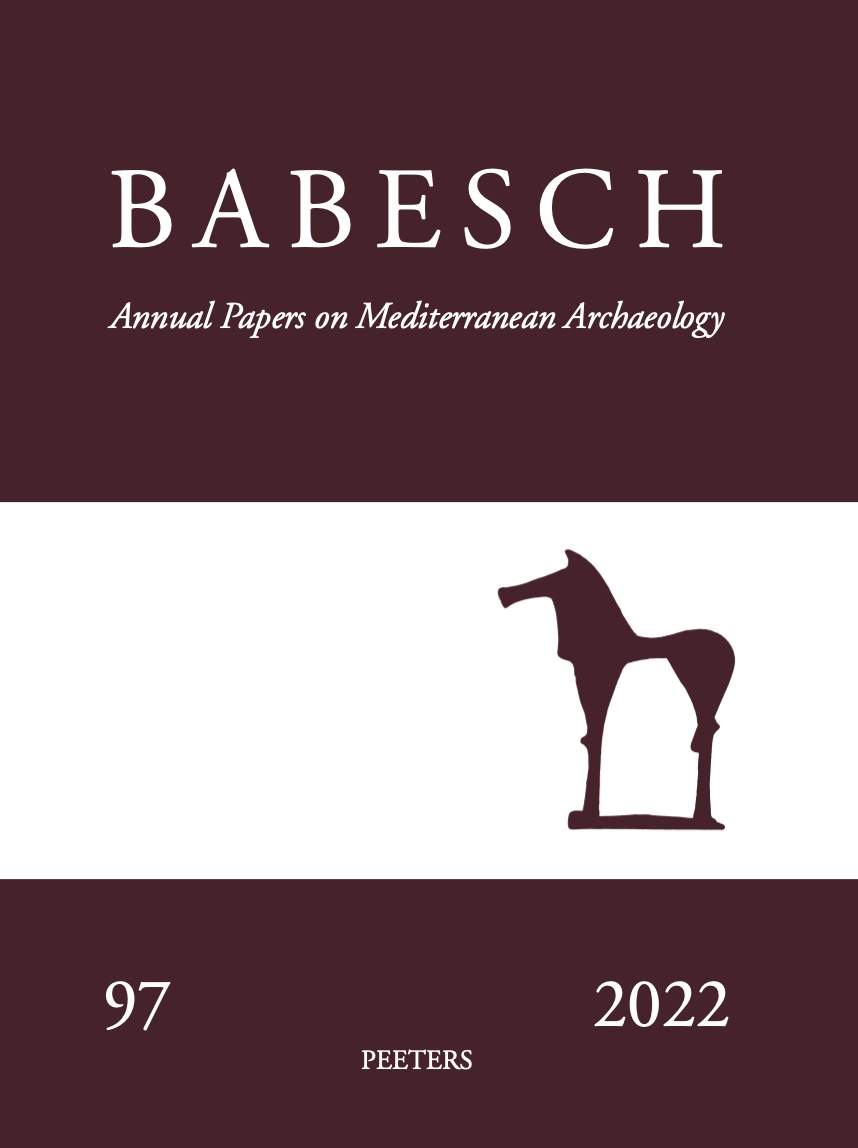 previous article in this issue previous article in this issue | next article in this issue  |

Preview first page |
Document Details : Title: Nicht immer wörtlich zu verstehen Subtitle: Wie Bildhauer mit griechischen Inschriften Werbung betrieben Author(s): DONDERER, Michael Journal: BABESCH Volume: 86 Date: 2011 Pages: 185-207 DOI: 10.2143/BAB.86.0.2128099 Abstract : Signaturen von Künstlern und Handwerkern hatten zu allen Zeiten vor allem zwei Ziele: Sie drückten den Stolz des Produzenten über die gelungene Herstellung ihres Werkes aus und konnten gleichzeitig als Werbung für künftige Auftraggeber dienen. Antike Bildhauersignaturen in griechischer Sprache bestehen in der Regel mindestens aus dem Individualnamen im Nominativ und einem Verbum, meistens einer Form von ποιεῖν. Erweitert werden konnte die Signatur durch den Vatersnamen und/oder das Ethnikon. Besonders interessant ist nun, dass sich in einzelnen Fällen, vor allem in jüngeren Phasen der griechisch-römischen Epoche, die ursprünglich wörtlich zu verstehende Formulierung aller vier Bestandteile offenbar zu einer erweiterten oder gar abweichenden Aussage wandeln konnte. Die unterschiedlichen Möglichkeiten der Interpretation zwischen der archaischen Epoche und der römischen Kaiserzeit sollen hier an charakteristischen Beispielen demonstriert werden. The signatures of sculptors and craftsmen have always had above all two purposes. They expressed that the manufacturers were pretty proud of their works and were at the same time means to win new customers through advertising. The antique Greek signatures of sculptors normally consist at least of the individual name in the nominative and a verb, mostly in a form of ποιεῖν. Beyond that the signatures could be extended by the patronymic and/or by the ethnicon. It is very interesting that obviously in some cases, above all in the more recent phases of the Graeco-Roman era, the verbal statements of all four components could be interpreted in a widened or even divergent way. The different possibilities of the understanding between the archaic epoch and the time of the Roman emperors will be demonstrated by means of some characteristical examples. |
|


